Completely independent "tots"
Self-reliance among the northern European countries became especially characteristic. The Scandinavians and the Dutch preferred to design ships themselves and build them in domestic shipyards.
And when choosing artillery weapons, primacy was often given to the products of the Swedish company "Bofors", which developed quite competitive weapons. Perhaps the main requirement for new ships was such a "non-combat" quality as rationality. Small powers never have extra money, and northerners have traditionally been thriving. But, on the other hand, there was a quite understandable desire to have a modern fleet, albeit small. As a result, from time to time, designers were able to create small combat ships with qualities that could well cause the envy of the naval "pillars" of the world. These ships include, in particular, small cruisers, very curious examples of which appeared in the states of northern Europe by the end of the XNUMXth century. I must say that the path to their creation was neither quick nor easy. The cruisers actually played fleets The North, with the exception of Holland, which had extensive colonial possessions, had a purely auxiliary role. The descendants of the Vikings preferred to invest in the coastal defense battleships, leaving for the "smaller brothers" the task of training sailors and reconnaissance.
Steam-steam corvette "Vanadis" in Karlskrona in the 80-s of the XIX century
Even the most prosperous Scandinavian country, Sweden, has long denied itself cruising power. Over the 50 years from the middle of the XIX century, only two wooden ships appeared in the fleet, which can be attributed to this class: the frigate “Vanadis” with a displacement of 2140 t, armed with eight 167-mm rifled guns and the same number of 190-mm bomb bombers, and 1850-ton "Balder" with artillery from two 167-mm guns and a pair of 30-pounds. Built in 1860 - 1870, these creations of the passing era could develop a maximum of 11 - 12 nodes and in the next decade had absolutely no military significance.
In such an unenviable state, the cruising forces (or rather, their absence) spent more than 30 years - a huge period for the end of the XIX century. Only shortly before the Russo-Japanese War, did the Swedes decide to build their first real cruiser, destined to be an intelligence officer following the main forces of a small fleet, which by that time consisted of a dozen coastal defense battleships. Therefore, from such a "scout" was not required excessively high speed: the main thing is that he could, in case of what, get away from the more powerful enemy ships. But mandatory were considered such qualities as good protection, decent weapons, and, most importantly - a low cost.
The government immediately decided that the naval reconnaissance aircraft should be developed and built exclusively on its own. And this choice turned out to be extremely successful. Scandinavian engineers managed to create a very curious ship. With a total displacement of 4300 T, the Fulgia had an 51-mm armored deck along its entire length, reinforced in the middle part of the 100-mm side belt, though not very wide and long. Particularly noteworthy is the artillery, consisting of eight six-inch, located in the two-gun towers. The towers themselves formed a “rhombus” of the French sample: one each in the bow and the stern and two in the middle of the hull along the sides. As a result, the small “Fulgia” could oppose the enemy with six very good guns of the domestic firm “Bofors” both in pursuit, and during retreat, and in the side salvo. It is curious to compare the "Swede" with our armored "six-tiers" or with the same French Kleber according to the artillery layout. High-breasted “Varyag” or “Askold” with practically unprotected guns had not too many chances in a duel with the Baltic “kid”. And the 7600-tonne "Kleber", with approximately the same minute onboard volley, was almost twice as much and more expensive, while developing even lower speed. (“Fulgia” on testing developed the 22,8 node, exceeding the design task by more than one node). Of course, this success had nothing to do with a miracle: in addition to the layout, the Swedish cruiser had a lower seaworthiness and cruising range.
A smaller, but quite sufficient for the Baltic Sea.
The Fulgia became the smallest armored cruiser in Europe (sometimes it is also considered the smallest unit of this class in the world, believing that the Japanese Chiyoda did not quite deserve to participate in the comparison of the battleships because of their unprotected artillery). But at the same time, the Swedish “angel” was one-on-one superior to any light cruiser of any Baltic state, including such sea giants as Germany and Russia, and the battleships that could quickly catch up were counted in units. (Actually, only the German "Blucher" was really such.) So, as the flagship of the small reconnaissance forces of the Swedish fleet, the "armored scout" looked quite personable.
Armored cruiser "Fulgiya"
After the end of the First World War, when at the end of the 1920-s cruisers of the new generation began to appear on the scene, surpassing the mini-armored carrier in speed on 10 nodes, the Fulgia was reclassified into a training ship. In this role, the “White Swan of Sweden”, as Scandinavians lovingly called their ship for the ceremonial white coloring, spent more than a quarter of a century, having visited many countries in the Americas, Asia and Africa over the years. Europe was not forgotten: in particular, the “traveler” “wandered” even to the Black Sea, which was fundamentally far from Scandinavia, becoming the first Swedish ship to visit the Soviet port of Sevastopol in 1925.
However, economical Swedes thought not only about training, but also about the possibility, if necessary, of leading a training ship into battle. Moreover, the clouds in Europe were gathering, and in the coming war a small, but extremely attractive, and as a convenient springboard, and as a source of useful raw materials, the northern country could easily become a victim of aggression, primarily from Germany. Therefore, in the 1939 year, the “old woman” was put to extensive modernization. Coal boilers replaced with four oil. In this case, "Fulgia" lost the front pipe, which has now become unnecessary. The freed stoker was reequipped for cockpit and training classes for future officers. In general, the appearance of a cruiser that has already served over 30 years has changed significantly. The old superstructures were completely demolished, and a modern, rounded "tower" took their place. "Rejuvenated" the appearance and due to the new inclined stem, replacing the old-fashioned ram. The “anti-mine” 57-graphs that were not needed were put ashore, and instead of them, four 57-mm and 40-mm anti-aircraft guns were installed, which looked quite good for the beginning of 1939. A year later, when war was gaining strength in Europe, the renewed veteran was ready for further service.
And the service of the unique cruiser turned out to be extremely long and fruitful, ending only almost half a century after it entered service, in the 1953 year. However, with the resignation of the life of the ship is not over. Another two years it was used for various experiments with new types of weapons, including anti-ship missiles that came into fashion. Then the disarmed "Fulgia" was placed at the wall, and finally, in 1957, they were sent for scrap.
With unintelligible wooden steamers began story cruisers and Sweden's southern neighbor, Denmark.
The 1550-ton corvette St. Thomas, built in 1871, was a bit like raiders of the confederation of the southern states of America, carrying one eight-inch and four six-inch (all rifled) and developing 13 knots in calm weather. After many years of 10, another sailing ship with a steam engine was commissioned, this time with an iron hull, the Fiyan. Its displacement already reached 2670 t, and the armament was probably a record for such a crumb: as many as eighteen 120-mm guns, four of which were long-barreled for that time, 35-caliber. In addition, the cruiser had all the fashionable “gadgets”: revolving 37-mm gunners and two 350-mm torpedo tubes, as well as a powerful ram. The main disadvantage of this not-so-ambitious “economical” ship was too low speed, barely exceeding 12 nodes.
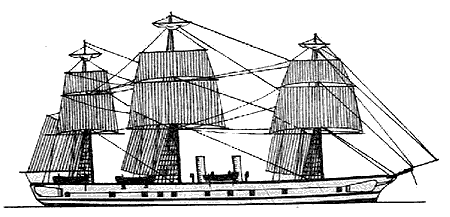
armored cruiser "Valkyrie"
I must say that the Danes decided to move to the construction of modern ships much earlier than their older (with respect to shipbuilding) neighbors-Swedes. In 1888, the largest of the Danish cruisers, the Valkyrie, came to water, whose displacement reached 3000 tons. It had a steel hull and an 63-mm armor deck, the spars remained purely symbolic, and the 5200-strong machine made it possible to develop quite decent for 80- X's speed - 17 nodes. In fact, the “Danish Valkyrie” was the domestic version of the famous Armstrong Esmeralda, with more intelligent weapons consisting of a pair of 210-mm guns in the bow and stern and six 150-mm along the sides, not counting the twelve 57-mm and 37 -mm riflemen and five 390-mm torpedo tubes. Copenhagen shipyard adequately coped with a very difficult task, proving that small but developed countries can create and build successful ships.
However, even this very, very modest-sized cruiser was too expensive to be repeated in the series. Instead, after a couple of years, he received a "younger brother" in the face of the 1300-tonne Hekla. This “mini-Elsvik” became one of the smallest cruisers in the world, practically keeping the layout and appearance of its predecessor.
Now the level of miniaturization satisfied the tiny military budget, and the project was decided to be repeated, twice. At the liberated naval shipyard, the 1320-ton Heimdal was laid, and the second, Geyser, was taken over by the private firm Burmeister og Vine, which many years later became one of the largest and most successful shipbuilding enterprises in Europe. The “geyser” came out even slightly lighter (1265 t), although it had a slightly thicker armor deck (up to 48 mm). True, the armament on this pair became less impressive: the six-inches gave way to more comfortable for such small ships with 120-mil-meters, but the 57-mm guns were replaced with 85-mm. Another useful addition was the 457-mm torpedo tube in the nose, bringing the total number of torpedo tubes to five.
Of course, the “Danish mini” can hardly be called full-fledged cruisers, although in terms of the layout ideology, they really were reduced copies of the famous “Small Armstrong Solution” - “Esmeralda”.
But they did not become "the most-most." The northern neighbor of Denmark, Norway, followed the same path, having introduced its Viking into the same year, which had a displacement of 1180 t and a shorter body on 9 and m. At the same time, he also had an 37-mm armor deck and artillery similar to Hekle, consisting of a pair of 150-mm guns and eight small-caliber riflemen (four 57-mm and 37-mm each). Only torpedo armament looked less impressive, moreover, by the number - three vehicles, in caliber (350 mm) and speed not exceeding 15 nodes. Considering the last factor, we can say that the Viking was already on the very edge between cruisers and gunboats. It is curious that the Norwegians also decided to repeat it in a few years, having built the Fridtjof, and with changes similar to those adopted by the Danes. The caliber of artillery, like the Danes, also got close, with the replacement of 150-mm guns on 120-mm, 57-mm - on 76-mm, and the displacement increased to 1360 t.
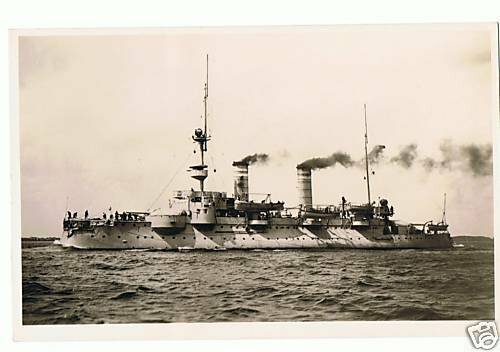
Frithyof
If the Scandinavians did not have to take care of distant overseas colonial possessions due to their almost complete absence, Holland had very impressive for a small country areas, requiring constant military concerns and costs, including from the fleet. Therefore, in the 70-s of the XIX century, the Dutch decided to update their ancient and exclusively sailing cruising forces, laying down six units in the Amsterdam military shipyard. Atzhey, Tromp, Königen Emma, De Reuters, Van Speake and Johan Billem Frizo were in complete contrast with the Danish and Norwegian mini. If the "Scandinavians" were an attempt to create an "ideal combat vehicle" in the smallest possible size, the Dutch cruisers were intended mainly for the colonial service. Therefore, their size was much more solid - the displacement reached 3420 - 3670 t, length - about 92 m, draft - almost 7 m. To save fuel in long hikes, the full spar was maintained, and the speed under the pairs remained quite moderate, or rather, very small (13,5 — 14,5 knots). They could take on board up to 600 tons of coal for long hikes. The armament also corresponded to the “overseas” tasks and consisted of quite numerous short-barreled 170-mm (six barrels) and 120-mm guns (eight barrels) in the complete absence of gunners and torpedo tubes. If we take into account the fact that there was no defense in principle, it is not easy to predict how the battle between such a “colonial” cruiser and half the size of an armored Danish or Norwegian mini Esmeralda could have ended. However, such a battle could not take place, not only because Holland and the Scandinavian countries in modern history always remained in good relations, but also because Tromp and its comrades were mostly away from Europe, in the Dutch East Indies . For smaller fouling, the iron hulls in the underwater part were sheathed with wooden planks, and on top - with copper sheets. In principle, at the time of the beginning of the construction of the series, this type of colonial cruiser had the right to exist, but after the end of the decade during which the series was built, by the time the latter was laid out - “Frizo” - the project had become outdated completely and irrevocably. The designers tried to somehow remedy the situation, but, realizing the hopelessness of such an event within the framework of a fundamentally outdated ship, they limited themselves to installing several small-caliber riflemen, also mainly for use in colonies.
The Dutch tried to create their own version of the small armored cruiser, having launched the 1890-ton Sumatra in 1700. This 17 hub cruiser carried a minimum of sails and had surprisingly colorful weapons. In the nose stood quite modern 210-mm gun, in the stern - 150-mm, in the side sponsons - a pair of 120-mm. In addition, four 37-mm gunners and a couple of revolver cannons of the same caliber were placed on the add-ons. Complementing this “vinaigrette” is a pair of 350-mm torpedo tubes. Protection, however, was adequate enough to
so small in size: it consisted of an 37-mm armor deck.
This strange ship, which can not even be unambiguously attributed to the class of cruisers, suddenly fell in love with the Dutch admirals and was developed. Two years later, an even more exotic and colorful sample came down from the stocks of the state shipyard in Amsterdam. “Königin Wilhelmi-na der Nederden” had a much more substantial displacement in 4530 t and unique artillery. In the nose part of the wide (almost 15 m) and very low-profile hull, on the superstructure was placed the 280-mm gun in the barbett installation, covered with armor of the same thickness. (The add-on allowed at least some use of a large-caliber gun on a slight disturbance, although an attempt to place such a heavy load higher meant a threat to stability.) In the stern there was a more modest, but still more than serious 210-graph paper, protected only by a shield. In the middle of the hull, a pair of 170-mm guns was located along the sides; In addition, the Wilhelmina had four three-inch and 37-mm riflemen - six single-barreled and four turret. The number of torpedo tubes has doubled compared with Sumatra. Thus, the "Dutch Queen" carried six types of artillery of five different calibers - is not it, some excess for a small ship. The reservation looked just as original: in addition to 280-mm barbet armor, a glacis of the same thickness covered the upper part of the boilers, and a similar structure with a thickness of 127-mm — the cylinders of the steam engine. The reason was that the mechanical installation did not fit under the low-lying 50-mm armor deck, which had 75-mm bevels. The combination of 11-inch artillery and the same armor at the speed of the entire 15,5 node made it doubtful that this extravagant ship belonged to the class of cruisers even more than in the case of Sumatra, but the Dutch confidently considered it as such. Moreover, the Wilhelmina became the biggest modern cruiser of the Netherlands, right up to the construction of the new modern ships in the 20 of the XX century. By that time, however, she had not been in the ranks for a long time: the “queen” was sent to rest in the 1910 year, three years after Sumatra.
ships like "Holland"
I must say that the admirals' love for excessive originality is over. The following ships of the “Holland” type were quite traditional cruisers, in many respects similar to the British “Astraes”. Sturdy high-boring small ships with moderate speed were well suited for colonial service and were an example of tradition, reliability and moderation. Therefore, it is not surprising that the government agreed to build six of them at once - the largest cruise series in the history of the modern Dutch fleet. To accomplish the task, the business had to involve all the largest shipyards: Amsterdam, Feyenoord and De Schelde. Each of the plants got a pair of ships, and as a result, the latter was put into operation only three years later compared to the head ship — a good achievement for a country whose naval shipbuilding sometimes stopped for decades.
Although the cruisers came out quite successful, their active life can not be called long. The fact is that the appearance of turbines, long-range medium-caliber guns and side armor on the scouts of the main fleets of the world quickly devalued the leisurely armored decks of the late 105th century. After the Russo-Japanese War, the "Holland" was no longer considered first-line ships, and at the beginning of the First World War they were slowly excluded from the lists of the fleet. Nevertheless, the couple survived until the next, World War II. “Nord Brabant” died during the invasion of the German army in Holland, and the “Gelderland” went to the Germans as a trophy. Representatives of the Kriegsmarine found the body and mechanisms of the "old man" quite suitable for further service and sent the ship for a major upgrade. The resulting Niobe air defense ship carried impressive anti-aircraft weapons of eight 40 mm, four 20 mm and sixteen XNUMX mm barrels. Its end is associated with one of the most famous victories of the Soviet naval aviation. Standing in the Finnish port of Kotka, “Niobe” seemed to our command a dangerous and unpleasant enemy (aerial reconnaissance took him for the battleship of the coastal defense “Weinemäinen”), and to combat it they assembled an armada of more than 130 aircraft, including torpedo bombers, dive bombers and new-fangled top-hat gunmen, carried bombs weighing one ton, under the general leadership of the Hero of the Soviet Union V.I. Cancer. On July 16, 1944, as a result of this massive raid, the former "Dutchman" sank, becoming the largest combat vessel of the "axis" countries sunk by Soviet aviation.
If the small northern countries of Europe had a fairly well-developed shipbuilding industry and preferred to build their own ships, the small "southerners" could not "pull" even small cruisers and were forced to order them abroad. And by no means always they lost. The leading firms of the major maritime powers gladly implemented a wide variety of requests, including for "small-sized" ships.
So, Romania ordered its only cruiser to the famous Armstrong. Launched in the 1888, the Elizabeth clearly belonged to the “mini” category: it had a displacement of 1300 tons and was distinguished by good speed (over 17 nodes) and formally very powerful weapons from four 170-mm guns, plus the same 57-mm guns and 356-mm torpedo tubes. Formally, because 170-graph paper was outdated and, together with small-caliber artillery, they were replaced by more relevant and modern rapid-fire 120-mm and 76-mm (four of each of the calibers). In general, according to tradition, the well-known British "cruising" company tried to fit a maximum of combat elements in a small ship, providing it with a good armored deck, the thickness of which reached 51 mm in the flat part and 88 mm on the bevels. To top it all, Elizabeth could take in reloading up to 300 tons of coal, which allowed her to go around the Black Sea "in a circle" a couple of times. This "small Armstrong" lasted almost three decades in the ranks, and only towards the end of World War I was disarmed, although he continued to serve in Supin, blocking access from the Danube to the sea. It was sent to the break-up only a couple of years after the full completion of hostilities.
Greece acquired an imported “kid” (although it was noticeably more solid). In 1910, in the United States, the Chinese order for a cruiser in 2600 t hung, which the Americans offered to the Greeks. He was renamed Hella, armed with Armstrong artillery consisting of two 152-mm, four 102-mm and two 76-mm riflemen, not counting small-caliber. In accordance with the dictates of time, the power plant was already quite modern, turbine, although the power and speed remained very modest. The project envisaged a move to 18 nodes, but when forcing the turbines under test, we managed to exceed it by as many as three nodes. Helle had a long life, with a complete upgrade in 1926 - 1928, when its appearance changed in about the same way as in the far northern Fulgia. The cruiser lost its old-fashioned halfway, superstructures and spars, receiving a new bridge and a sloping stem. However, the greatest interest was the artillery, which now consisted of three 152-mm guns and a pair of 76-mm and 40-mm anti-aircraft guns. The ship retained its two 457-mm torpedo tubes and acquired the ability to take more than a hundred minutes. In this embodiment, it was quite modern and powerful for its class combat unit, quite valuable if you close your eyes to a completely cruising speed, which, even after the boilers were replaced with oil, slightly exceeded 20 nodes. In August, 1940, an unsuspecting cruiser, calmly anchored in its harbor, sent a torpedo from the Italian submarine Delfino sent to the bottom of Mussolini’s personal order just before the Italian invasion of Greece.
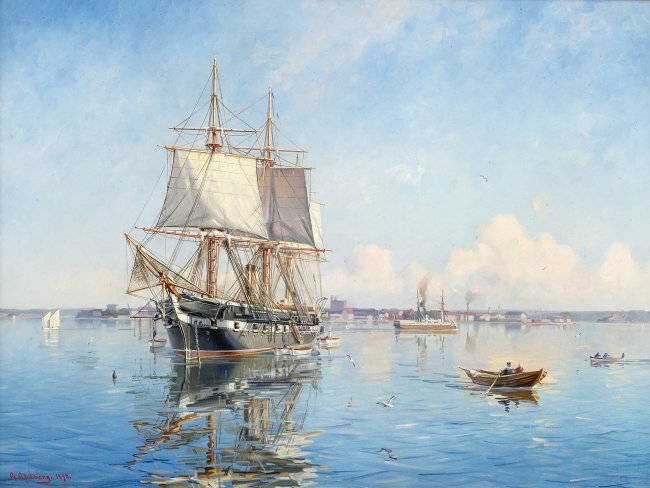
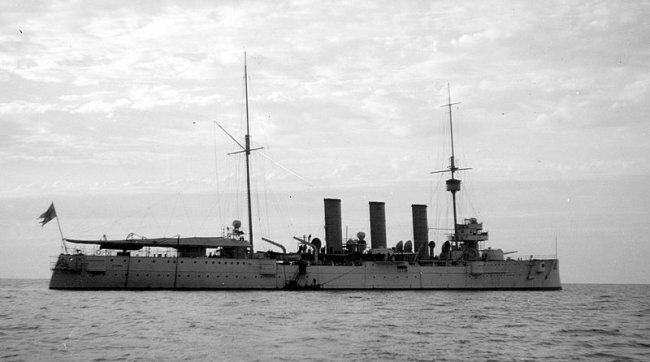
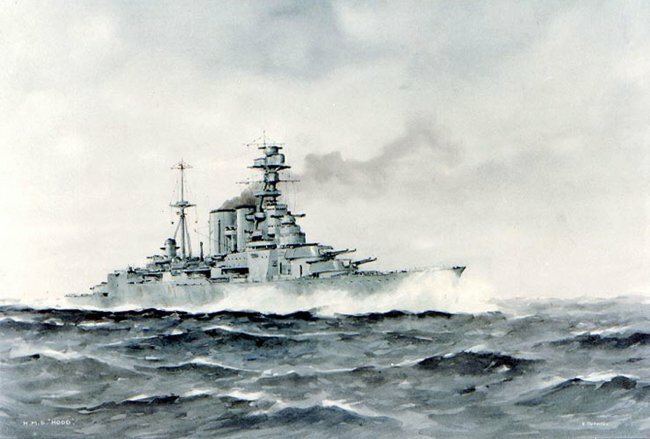
Information